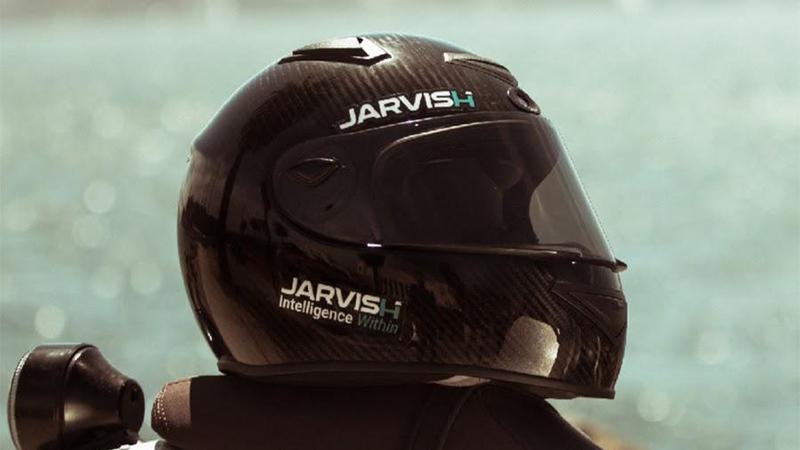Helmets are essential safety gear designed to protect you from head injuries during activities like cycling, motorcycling, skateboarding, or even certain sports. However, in the growing market of protective gear, counterfeit helmets have become an increasing concern. These fake helmets may appear to be the real deal but lack the safety features and certifications necessary to protect your head in the event of an accident.
In this article, we will guide you through the process of spotting a fake helmet, help you understand the risks associated with counterfeit helmets, and provide tips on how to ensure that the helmet you buy offers the protection you need.
Why Fake Helmets Are Dangerous
Fake helmets can pose serious risks to the wearer. While they may look similar to legitimate, certified helmets, they often fail to meet essential safety standards. Here are some key dangers of counterfeit helmets:
1. Lack of Impact Resistance
Real helmets are designed to absorb shock and protect your skull in the event of a fall or collision. Fake helmets, however, are often made with substandard materials that offer little to no impact resistance. This can result in severe head injuries, including concussions or skull fractures.
2. No Safety Certifications
Certified helmets must meet certain safety standards like the CPSC (Consumer Product Safety Commission) for bikes, DOT (Department of Transportation) for motorcycles, or ECE (Economic Commission for Europe) for international standards. Fake helmets usually lack these essential certifications, meaning they haven’t undergone rigorous safety testing.
3. Inconsistent Manufacturing
Counterfeit helmets are often poorly constructed, with inconsistent materials, weak straps, or inadequate padding. These defects compromise the helmet’s ability to protect in an accident, leaving you vulnerable to injury.
4. Unreliable Materials
Fake helmets are often made with cheap and flimsy materials like low-quality plastic, foam, or padding. This can compromise their ability to distribute impact forces properly, reducing the helmet’s effectiveness during a collision.
Now that you understand the risks, let’s look at how you can spot a fake helmet and ensure that the one you buy provides the protection you need.

1. Check for Safety Certifications and Labels
The first step in identifying a fake helmet is to look for the proper safety certifications. Legitimate helmets will have labels or stickers indicating that they meet the required safety standards. These certifications vary depending on the type of helmet and where it’s sold:
- CPSC (Consumer Product Safety Commission): Required for bike helmets in the U.S.
- DOT (Department of Transportation): Required for motorcycle helmets sold in the U.S.
- ECE (Economic Commission for Europe): Required for helmets sold in many international markets, especially in Europe.
- Snell Memorial Foundation: A higher standard for motorsports helmets, commonly used in racing.
If the helmet doesn’t have any of these certifications, it’s likely a fake or substandard product. Additionally, verify that the label is not easy to peel off, as this can be a sign that it’s been added later, especially in counterfeit helmets.
2. Examine the Quality of the Materials
Genuine helmets are made with high-quality materials designed to absorb impacts. Fake helmets, on the other hand, often use cheap alternatives that do not offer adequate protection.
Things to look for:
- Shell Material: Look for a hard, durable outer shell made of polycarbonate, fiberglass, or carbon fiber. Counterfeit helmets may use cheaper plastic or flimsy materials that can crack or shatter more easily upon impact.
- Inner Foam: The inner foam should be made of high-quality expanded polystyrene (EPS) foam. Fake helmets may use inferior foam that doesn’t absorb shocks effectively.
- Padding: The padding inside the helmet should be comfortable, thick, and securely attached. Poorly constructed padding or thin foam can lead to discomfort and reduce the helmet’s protective capabilities.
How to Test:
Gently squeeze the outer shell and the foam inside. A legitimate helmet will have a sturdy shell and thick foam that resists compression. Fake helmets often feel lightweight and may bend or collapse easily.
3. Look for the Helmet’s Weight
A genuine helmet should feel substantial in your hands, as it is designed to be both protective and durable. If the helmet feels unusually light, it could be an indication that it’s made from cheap materials and lacks the protection offered by standard helmets.
- Too light: Fake helmets often use lower-density foam or thin plastic that decreases their weight but also their ability to absorb shock. This can be dangerous in the event of an accident.
- Just right: Real helmets, especially those certified for safety, are typically heavier due to the quality of materials used in construction.
If you come across a helmet that feels unusually light or flimsy, it’s best to avoid it.
4. Inspect the Straps and Fit System
The straps of a helmet play a crucial role in keeping the helmet securely on your head during an impact. Fake helmets often use substandard straps that are weak, flimsy, or poorly sewn.
Look for:
- Secure Straps: High-quality helmets feature chin straps with adjustable buckles and secure, comfortable fasteners. Fake helmets may have loose or poorly stitched straps that fail to keep the helmet in place during a fall.
- Fit Adjustment System: Many high-end helmets offer adjustable dial systems that allow you to customize the fit. Fake helmets often lack this adjustment feature, making it harder to get a snug fit, which is essential for proper protection.
A real helmet should have well-constructed straps that are strong enough to keep the helmet in place, even during rough activity.
5. Check the Price
If the price of a helmet seems too good to be true, it probably is. Genuine helmets from reputable brands can be expensive due to the cost of high-quality materials, research, and manufacturing processes. A helmet that is significantly cheaper than comparable certified models should raise a red flag.
- Unreasonably Low Price: A helmet that costs much less than typical market prices may indicate that it is counterfeit or has been manufactured with cheap, unsafe materials.
- Fair Price Range: Legitimate helmets usually range from $30 to $300, depending on the type and brand. Ensure the price aligns with the quality and certifications you expect.
Avoid helmets that are priced too low, as they are likely to be substandard and unsafe.
6. Buy From Reputable Sources
One of the best ways to avoid buying a fake helmet is to purchase from trusted retailers and brands. Stick to well-known, reputable stores, whether online or in-person, and avoid purchasing from unofficial or unverified sellers, especially on auction sites or social media platforms.
- Authorized Retailers: Ensure that the store you buy from is an authorized seller for the brand.
- Brand Reputation: Choose helmets from established brands with a strong reputation for safety and quality, such as Bell, Giro, Schuberth, or Arai.
By purchasing from trusted sources, you reduce the risk of buying a counterfeit helmet.
Conclusion
Wearing a helmet is one of the most effective ways to protect yourself during high-risk activities, but wearing a fake helmet can leave you exposed to serious injuries. By learning how to spot a counterfeit helmet—whether it’s checking for safety certifications, examining the quality of materials, inspecting the straps, or considering the price—you can ensure that the helmet you wear provides the protection you need.
Remember, the helmet you choose should offer both safety and comfort. Never compromise on quality when it comes to protecting your head. Always invest in helmets from reputable brands and verified sellers to keep yourself safe from the dangers of counterfeit products.



